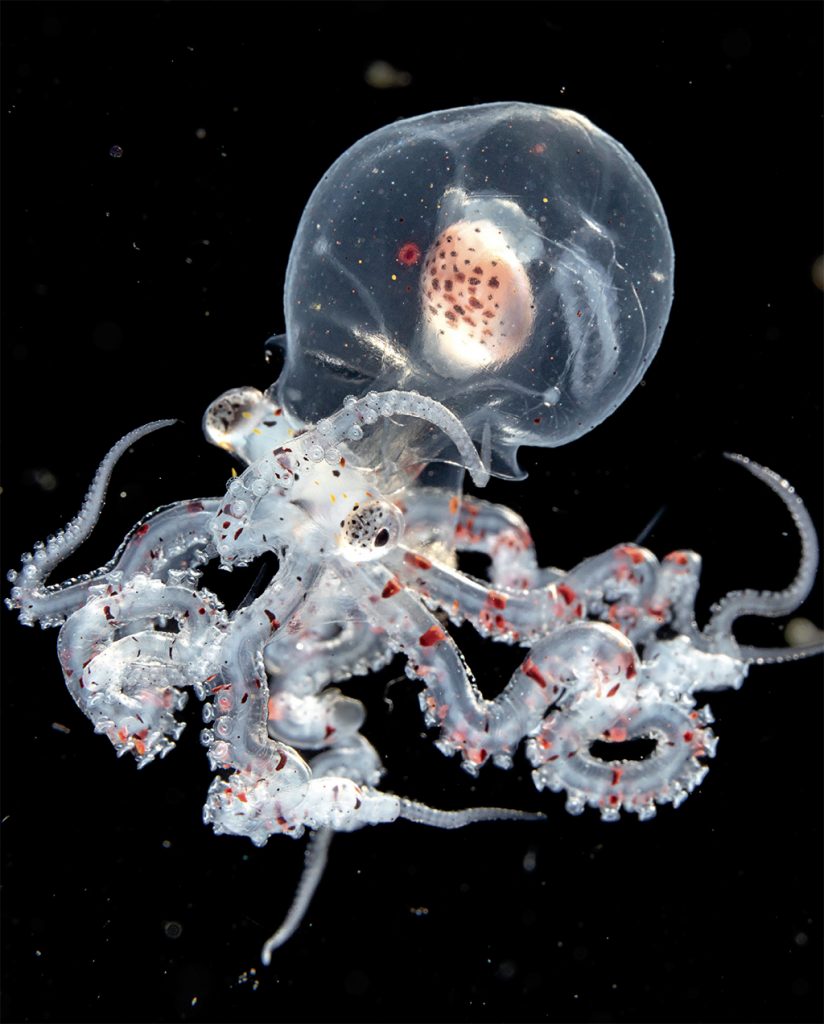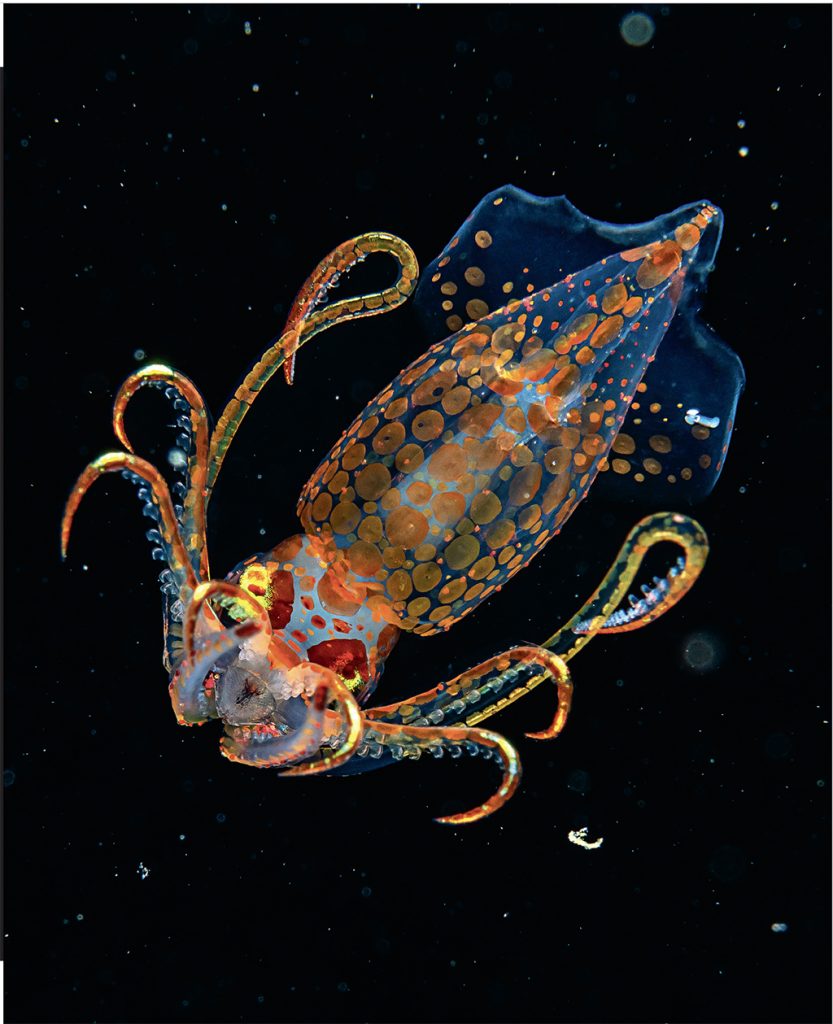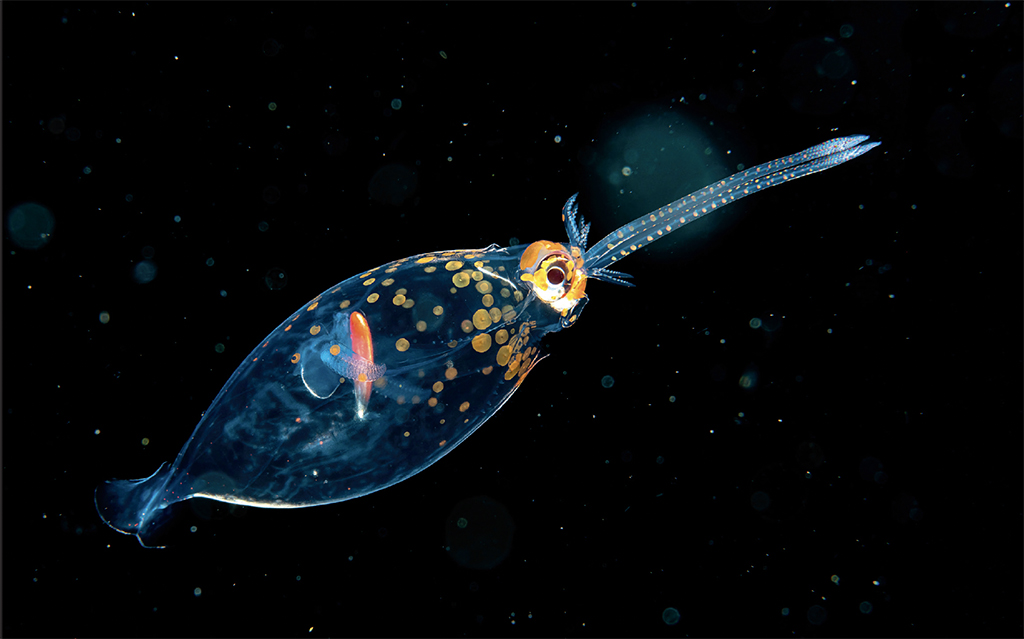TEXT Patrizia Boglione – IMAGES Wu Yung Sen
MY ARTICLES ABOUT FOOD, ARTS, SUSTAINABILITY
If instead of searching for life on distant planets and waiting for a new future to come from the sky aboard a spaceship we went down to explore the alien peoples living in the mountains at the bottom of the ocean?.

If instead of producing the food of the future in a laboratory, we discovered that the solution lies in consuming everything, absolutely everything that others discard, just as it happens among the creatures of the abyss?
If instead of hiding from the sunlight on a boiling planet, we were the ones emitting light, speaking new languages, and illuminating new paths for the future?
If instead of conforming to the infinite superficiality of the digital world, we went to explore the infinite diversity of the millions of unknown creatures that inhabit the abyss?
If instead of stopping at the surface of things, we truly tried to understand deeply what is happening to us?
These are some of the questions I asked myself when I discovered the marvelous and terrifying creatures that inhabit the abysses of the planet. How do they live, what do they eat in the absence of light, how do they migrate, how do they protect their world?
Our culture looks up, to space, where there is light. Up there, to put it in Dante’s words, there is Paradise. But for once, let’s try to invert our gaze, to seek wonder and life at the bottom of the ocean, where there is beauty, terror, and so much mystery. Wonder and fear, in the absolute darkness. In an immense black expanse as big as the entire planet, ephemeral, fragile, transparent creatures move, of which we know very little.
There are worlds down there that live different lives and face impossible challenges. Trying to understand them means leaving behind everything we know. That trees are important to provide oxygen for life, that life cannot exist without oxygen, that light becomes energy, that to eat you just have to pick fruits. That the day is born when night falls and dies at sunset. But down there, the day reaches into the twilight zone, after which everything becomes as black as pitch.
Let’s imagine descending slowly beneath the sea surface; around 200 meters, light begins to give way to darkness. It’s the twilight zone. Where melancholy lies, everything turns blue. There are fish with red color that disappear and turn black because right there, the human eye sees nothing but blue. And then, at around 1000 meters deep, only darkness. But suddenly, thousands of luminescent creatures, flat, transparent, fish, squid, move like fireworks in the darkness. Transparency is their way of defending themselves, of not being found; disappearing is their strength.
Thoughts come to me as fast as transparent fish: while we compete to expose ourselves naked in the digital world and throw meaningless fragments of our lives onto the net that leave no trace and no longer interest anyone, what would happen if we disappeared too? If finally no one stopped to judge everything we say, we do, we post? If we were finally free to live our lives?
I return to the water, I look around, where is everyone? Where do they go every night? They go to have breakfast up there, they tell me, a gigantic vertical nightly migration that feeds on phytoplankton on the surface and returns down at dawn. It carries down the carbon that will remain trapped in the bottom for millennia. Scientists believe that perhaps about half of the population of the twilight zone migrates every night – trillions of fish, crustaceans, and other creatures, rising and falling in unison. It’s the ocean breathing. It’s the ocean making the planet breathe.
And then? Going deeper?
In the depths, there are millions of creatures, each different from the other, creatures that change all the paradigms of our certainties, that breathe iron, creatures with glass skeletons, and creatures that communicate through their skin, that eat marine snow and everything that dies and falls down.
In the depths, to adapt to life, they assume monstrous shapes, huge mouths, and extra-large sizes. It’s like watching a horror movie. Isn’t there also so much horror in the abyss of the human mind?
The very long teeth allow them to eat very large prey and stock up on food: when a whale sinks, there’s nothing left in no time.
For these creatures, it’s difficult to feed, but also to find a life partner. They emit flashes of light through photophores, to attract prey and as a sexual signal. No courtship dances, no intertwining of tails like seahorses: down there, they speak the language of light.
But what feeds this world?
In the marine depths, underwater, one can observe a dance of millions of white particles that look like snow. What lives on the surface, in the end, dies and slowly sinks, degrading in the process. This mixture of organic particles, debris, bacteria, shell fragments, phytoplankton, small dead organisms, and excreta is known as “marine snow.” As it descends deeper, it becomes precious nourishment for mysterious communities of organisms that inhabit the abysses.
Marine snow represents the main source of sustenance for living beings that inhabit areas where sunlight never reaches. It is one of the fundamental pillars of global ecology. This ecosystem helps support life on the entire planet.
In the ocean depths, we encounter creatures like the “vampire squid from hell,” despite the name, a harmless cephalopod of red or black color about thirty centimeters long. This extraordinary alien creature, with its huge eyes and eight arms interconnected by membranes that unfold around it like a cloak,
collects and feeds on this marine snow as it descends.
Other organisms patiently await on the bottom.
Some organisms create communities around the carcass of a whale that sinks down to the ocean floor. Others gather in “oases” located around hydrothermal vents. In these areas, where oceanic plates diverge, chemical compounds like hydrogen sulfide allow microorganisms to create organic matter through a process known as chemosynthesis, similar to how plants on the surface use sunlight for photosynthesis.
In the ocean, everyone eats everyone. Every marine organism is actually a predator. The only living beings that play a role as “producers” are phytoplankton algae, which form the foundation of complex oceanic food webs and also generate at least half of the oxygen we breathe.
These marine meadows, seemingly invisible but so fundamental, are formed by microalgae that often protect themselves with siliceous or calcareous armor, an adequate measure to escape their numerous predators. These armors inevitably end up on the seabed, contributing to the formation of sediments in the abyssal plains. However, they play a crucial role in capturing atmospheric carbon, acting as natural “sinks,” capable of retaining up to 25% of atmospheric carbon dioxide on the ocean floor, thus helping to cool our planet.
Unfortunately, these calcareous shells that absorb CO2 are rapidly dissolving due to rising temperatures and ocean acidification. Global warming and ocean acidification are significantly reducing planktonic life, resulting in a decrease in marine snow, which in turn limits the ability to absorb carbon dioxide.
And what does this have to do with our lives? What does it have to do with sustainability?
Sandra Casey tells us in her book “The Underworld: Journeys to the Depths of the Ocean.”
“The smallest inhabitants of the depths are the most powerful biological force on Earth. These are microorganisms: bacteria, archaea, protists, and viruses, single-celled organisms that fuel the laboratory of life. They convert chemicals into energy, recycle carbon, provide oxygen, transform waste into nutrients, and neutralize toxins, among countless other
feats. We wouldn’t be here without them. There’s nothing anthropocentric about all this; it’s a true cast of aliens. But the diversity of the depths is the essence of its charm. Our survival depends on the ocean. The deeper we delve, the more we must revise our ideas about how the Earth works, how climate behaves, what we can learn from the distant past, our position in the whole of life—even our definition of life.
Nature operates as a massively interconnected system, with the deep sea as the motherboard. The deep absorbs our excess carbon (at least so far), drives ocean circulation (and thus climate), regulates Earth’s geochemistry, and absorbs excess heat. There, in the darkness, lie the foundations of the planet.”



Leave a Reply